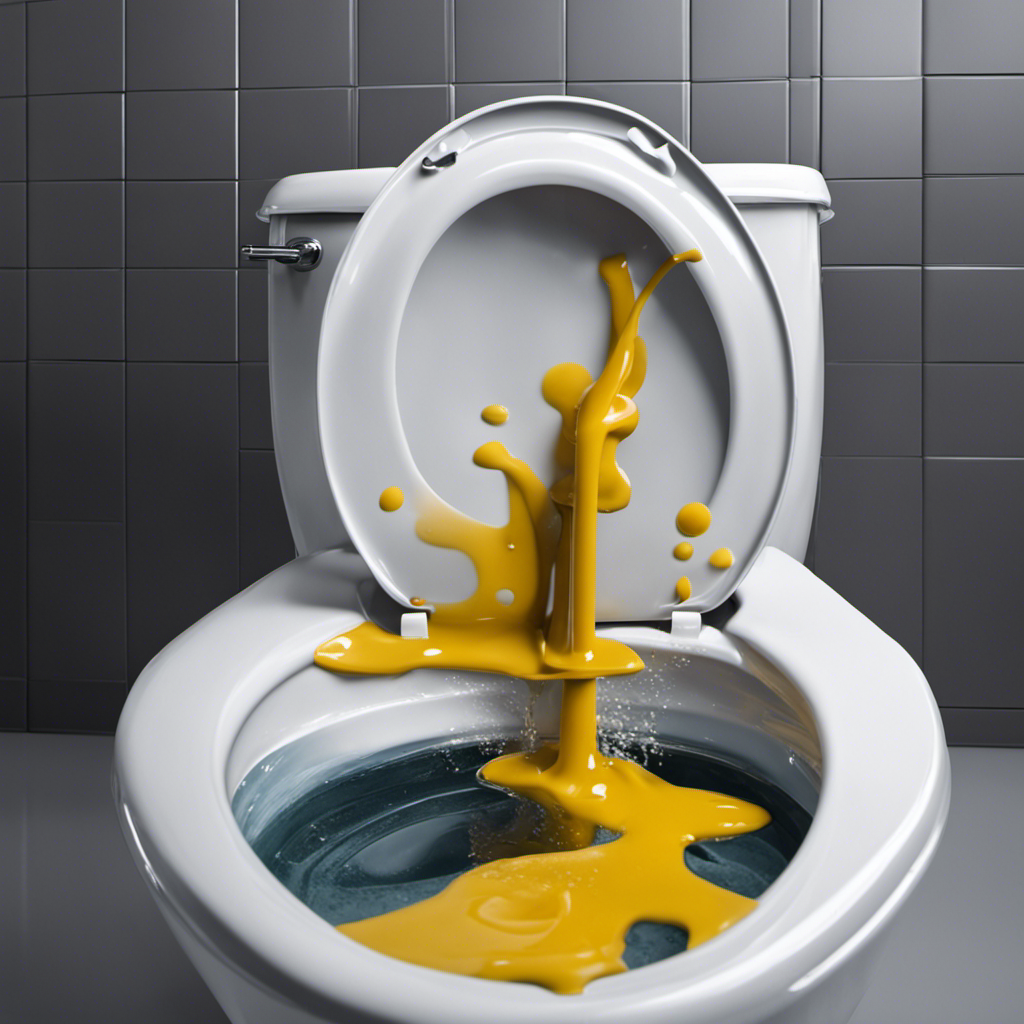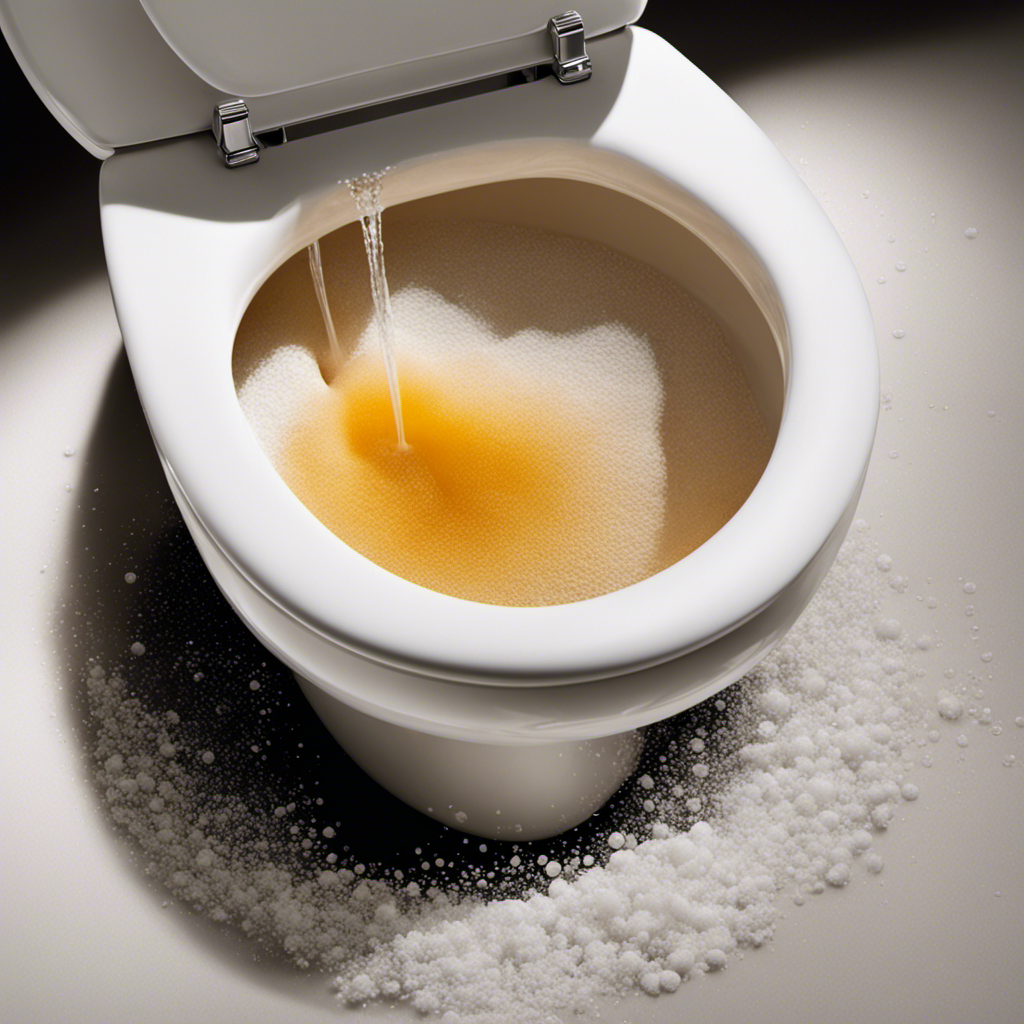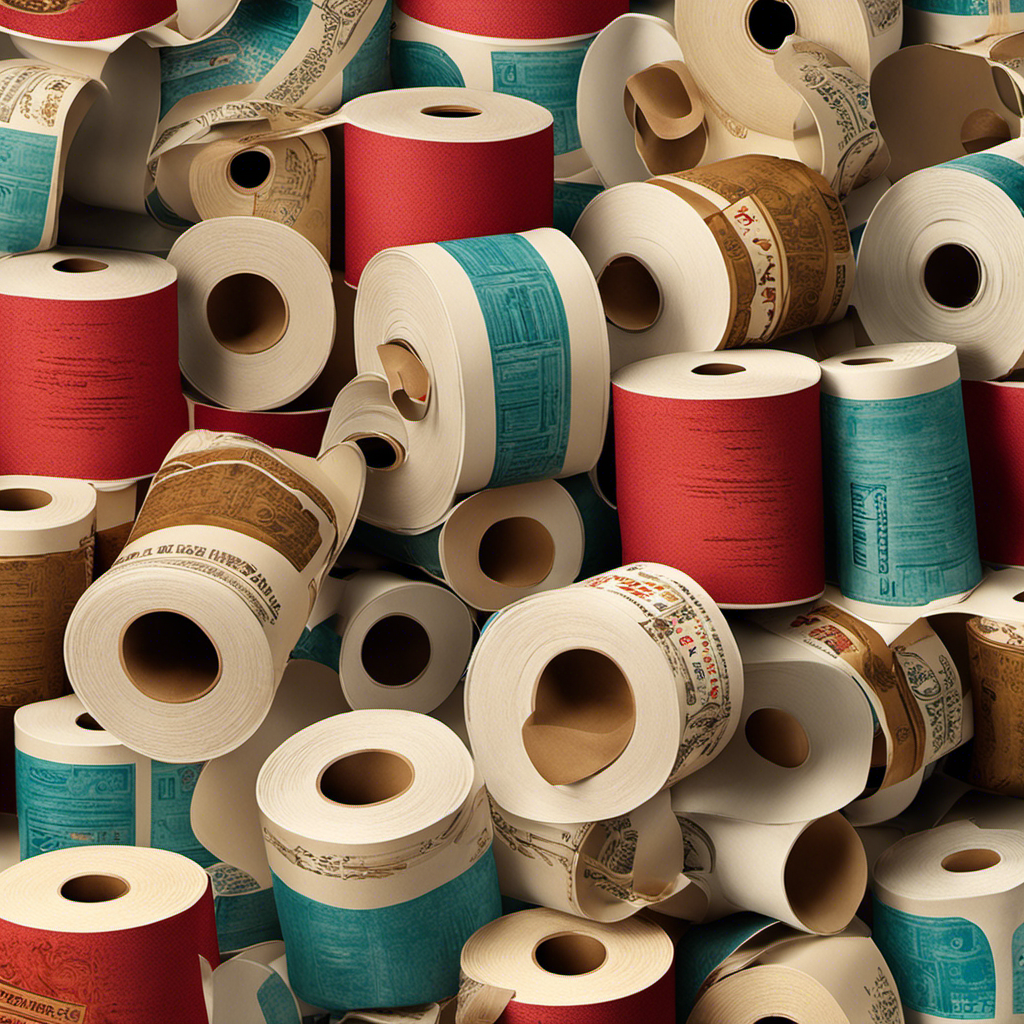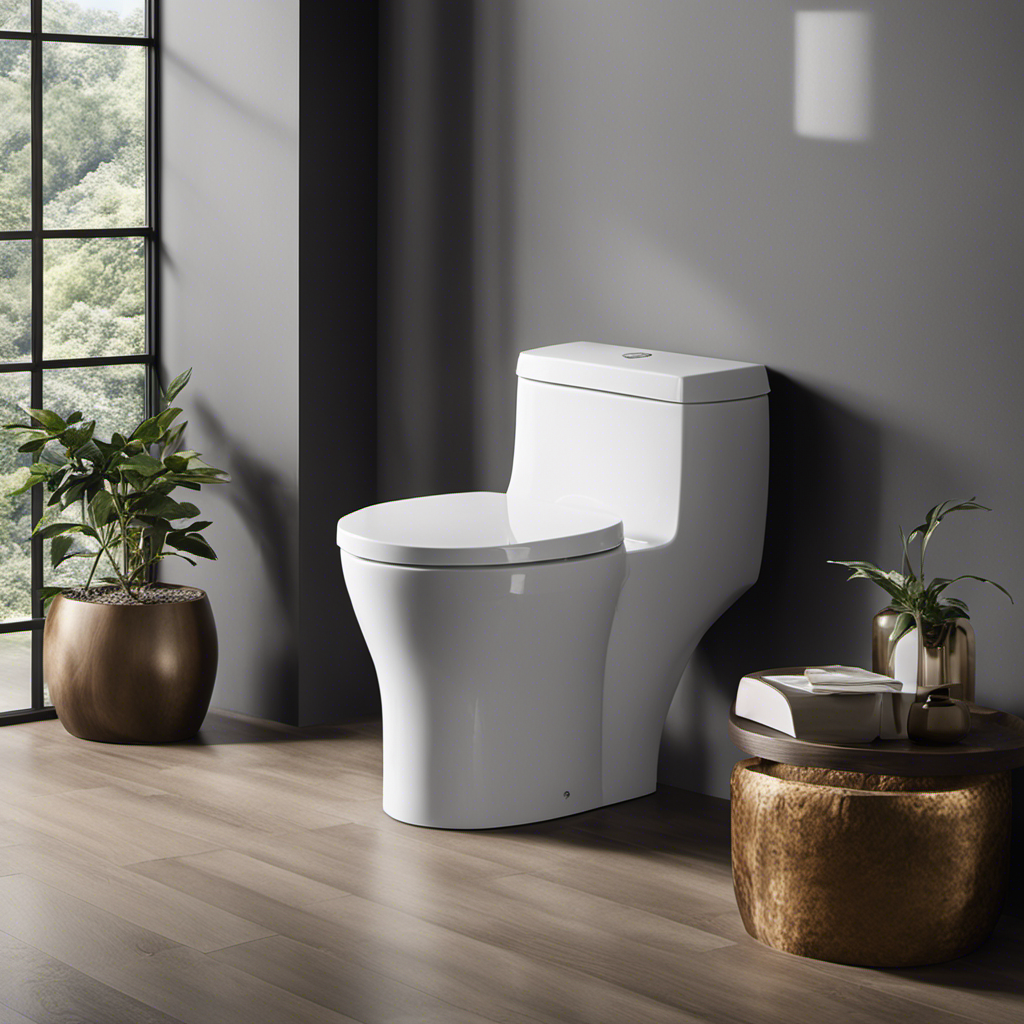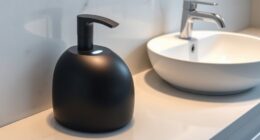I’ve been there before – standing in front of a clogged toilet, feeling frustrated and unsure of what to do next. But fear not! In this step-by-step guide, I’ll show you exactly how to unclog a clogged toilet.
From understanding the common causes of toilet clogs to effective alternatives to plunging, I’ve got you covered. With the right tools and a little know-how, you’ll be able to tackle this plumbing problem like a pro.
So let’s dive in and get that toilet flowing smoothly again!
Key Takeaways
- Flushing excessive amounts of toilet paper and non-flushable items can cause toilet clogs.
- Regular maintenance and cleaning can help prevent toilet clogs.
- Plungers, toilet augers, and chemical drain cleaners are essential tools for unclogging a toilet.
- If plunging doesn’t work, there are alternative methods such as using chemical solutions or hot water, or calling a professional plumber.
Understanding the Common Causes of Toilet Clogs
Understanding the common causes of toilet clogs can help you prevent future clogging issues.
It is important to know what leads to a clogged toilet so you can take steps to avoid it.
One common cause is flushing excessive amounts of toilet paper. To prevent this, only use the necessary amount of toilet paper and flush multiple times if needed.
Another cause is flushing non-flushable items such as baby wipes or feminine hygiene products. Always dispose of these items in a trash can instead.
Additionally, improper use of the toilet can lead to clogs, such as flushing large amounts of waste at once. Remember to flush in-between each use.
Essential Tools and Materials for Unclogging a Toilet
You’ll need a plunger and a bucket to tackle the task of fixing the blockage in your bathroom. Here are the essential tools and materials you’ll need to unclog a toilet:
-
Plunger: This is the most common tool used to unclog a toilet. It creates suction and pressure to dislodge the blockage.
-
Toilet auger: If the plunger doesn’t work, a toilet auger can be used. It has a long, flexible cable that can reach deeper into the pipes to break up the clog.
-
Chemical drain cleaner: In some cases, a chemical drain cleaner can help dissolve the clog. However, be cautious when using these products as they can be harmful to the pipes and your health.
With these tools in hand, you’ll be well-equipped to tackle a clogged toilet. Now, let’s move on to the step-by-step guide to plunging a clogged toilet.
Step-by-Step Guide to Plunging a Clogged Toilet
Now, let’s start with the first step in plunging a blocked toilet.
When faced with a clogged toilet, there are two main tools you can use: a toilet auger and a chemical drain cleaner.
The first step is to assess the severity of the clog. If it’s a minor blockage, you can try using a plunger first.
Make sure there is enough water in the bowl to cover the rubber suction cup of the plunger. Place the plunger over the drain hole and push down firmly, then pull up quickly. Repeat this motion several times until the water starts to drain.
If the clog persists, it’s time to move on to the next step and use a toilet auger or a chemical drain cleaner.
Effective Alternatives to Plunging for Stubborn Clogs
If the plunger isn’t working, there are effective alternatives for stubborn clogs. Here are three options to try:
-
Chemical solutions:
-
Use a toilet bowl cleaner specifically designed to dissolve clogs. Follow the instructions on the product carefully.
-
Pour a mixture of baking soda and vinegar into the toilet bowl. Let it sit for a few minutes, then flush with hot water.
-
Consider using a drain snake or an auger to physically break up the clog.
-
Hot water method:
-
Boil a pot of water.
-
Carefully pour the hot water into the toilet bowl, aiming for the center of the clog.
-
Let the hot water sit for a few minutes to soften the clog.
-
Flush the toilet to see if the clog has cleared.
Preventing Future Toilet Clogs: Maintenance Tips and Tricks
To prevent future issues, a simple maintenance tip is to regularly clean your toilet bowl. By keeping your toilet clean, you can avoid the buildup of mineral deposits, bacteria, and other debris that can obstruct the flow of water and lead to clogs.
Here’s a step-by-step guide on how to clean your toilet effectively:
-
Start by putting on gloves and gathering the necessary supplies: a toilet brush, toilet cleaner, and disinfectant spray.
-
Apply the toilet cleaner around the rim and inside the bowl, making sure to cover all areas.
-
Use the toilet brush to scrub the bowl, focusing on the waterline and under the rim.
-
Flush the toilet to rinse away the cleaner and any loosened debris.
-
For an extra thorough clean, spray disinfectant around the toilet seat, handle, and base, then wipe with a cloth or paper towel.
Regularly cleaning your toilet not only prevents clogs but also maintains proper toilet water pressure, ensuring efficient flushing and a clean, hygienic bathroom environment.
Frequently Asked Questions
Can I Use a Chemical Drain Cleaner to Unclog My Toilet?
I wouldn’t recommend using a chemical drain cleaner to unclog a toilet. There are alternative methods that are safer and more effective. Chemicals can damage the pipes and harm the environment.
How Do I Know if the Clog Is Too Severe for Me to Unclog It Myself?
If the toilet is overflowing, water is not draining, or plunging doesn’t work, it may be a sign of a severe clog. It’s time to call a professional plumber for help.
Is It Safe to Use a Toilet Auger on My Own?
Yes, it is safe to use a toilet auger on your own. However, there are alternatives to consider, such as using a plunger or a chemical drain cleaner. Hiring a professional plumber has its pros and cons.
What Should I Do if Plunging Doesn’t Work?
If plunging doesn’t work, there are alternative methods to unclog a toilet. One statistic to consider: 85% of clogs can be resolved without professional help. Here’s what I do.
Are There Any Specific Maintenance Tips to Prevent Future Toilet Clogs in Older Homes?
To prevent future toilet clogs in older homes, there are preventive measures you can take. Understanding common causes like flushing excessive toilet paper or foreign objects can help you avoid clogs.
Conclusion
In conclusion, unclogging a clogged toilet doesn’t have to be a messy ordeal. By understanding the common causes of toilet clogs and having the essential tools and materials on hand, you can easily tackle this unpleasant task.
Whether you choose to use a plunger or opt for one of the effective alternatives, following the step-by-step guide will help you get the job done.
Remember, prevention is key, so don’t forget to implement the maintenance tips and tricks to keep future clogs at bay.
So go ahead, take the plunge and bid farewell to those pesky toilet clogs!
